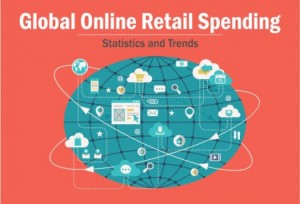Businesses today have access to unprecedented levels of information. They can monitor everything their customers view, buy, and return, as well as watching the way visitors interact with them online. This reliance on data analytics has spread to every area of business, including B2B service providers, insurers, and HR firms.
Small businesses can actually use real-time data to help them as they approach financial institutions for loans. Once in a lender’s office, an entrepreneur’s past and future business earnings will be taken into account, as well as any credit scores attached to the entrepreneur or the business. With analytics in place, a business owner can gain an edge before meeting with a lender to request funds. Here are a few ways technology is helping transform the way small businesses get loans.
Accurate Projections
Before approaching lenders, business owners are advised to gather documentation that includes business plans and financials. Lenders often expect to see financial details as part of that documentation, including projections of future earnings. This can be difficult for new business owners, who may lack the history with that type of business to know what to expect.
Real-time analytics are taking away the guesswork of putting financial reports together for loans. Using financial reporting tools like Tagetik or Adaptive Insights, businesses can quickly put together thorough financial data that is more accurate and professional than manual methods.
The Financial Institution’s Perspective
Businesses should be aware that they aren’t the only ones using data analytics to prepare for the loan request process. Risk analysis is an important part of the lending process for financial institutions and, thanks to increased access to information, lenders can go even further in that assessment. Software attached to a business’s website can now monitor an applicant’s behaviors while completing the application and determine whether or not that person exhibits “red flag” behaviors like delaying in certain sections while completing the online form.
Financial institutions have already been using the Internet to research individuals and businesses applying for loans. In addition to basic Google searches, some banks and credit unions now screen applicants by checking their social media accounts. While business owners are often careful about what they post on their professional social media accounts, lenders could use these platforms to factor in whether the business is investing time and energy into marketing. They may also consider the personal social media accounts of the business owner and any other employees on staff at the time an application is submitted.
Screening Lenders
Businesses can use real-time data to screen potential lenders, as well. Without giving any information out, entrepreneurs can get rates from multiple lenders in one place, limiting the search to those within a certain geographic range. Many lenders also let potential applicants calculate their rates before going through the application process, saving them the time and embarrassment of being rejected.
Just as the Internet has made it easier for lenders to screen applicants, it has also opened up borrowing options for small business owners. Consumers are no longer limited to local banks and credit unions, with online lenders willing to offer financing to businesses regardless of location. With so many banks now turning down small business owners, online lending has become more popular in recent years.
Data for Profiling Purposes
Perhaps the biggest risk to small business owners is the profiling lending institutions will be able to do. Some online lenders already use analytics to profile customers, assessing risk based on historical data attached to those behaviors. Applicants could be turned down based on the email address they use, for instance, or whether or not the business has an active social media presence.
As much as these criteria could hurt some customers, business owners who might be turned down by traditional lenders are finding they are seen as low risk by this new wave of lending. Analytics could also someday make it easier for small business owners to get financing from traditional lenders, which will now be able to verify that they are reliable, rather than rejecting them outright based solely on the fact that they are new.
Small business owners need every advantage they can get when applying for loans. Both lending institutions and borrowers have tools available that can inform the process, making it both easier and more difficult than ever to make sure a loan request goes through.
Business & Finance Articles on Business 2 Community(10)




